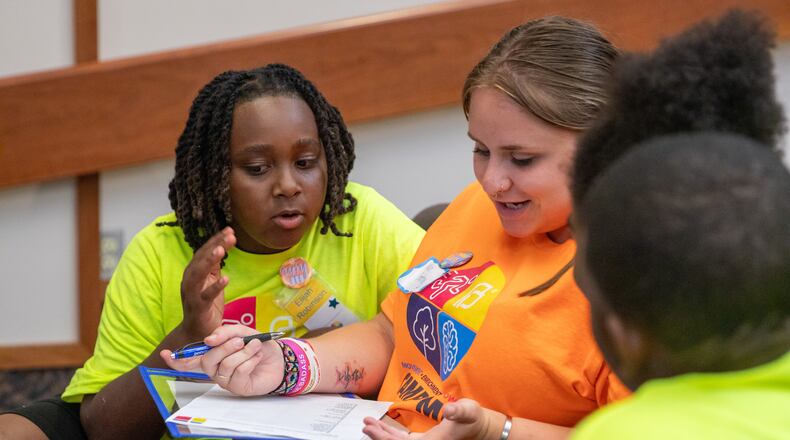It’s harder than it sounds, Springfield Promise Neighborhood director Kali Lawrence said.
“We’ve been trying to think about when a kid starts in the city schools, or even preschool, before kindergarten, how can we pour resources into them and support them and follow them through that child’s educational track … we discovered that is very difficult, because there is a lot of mobility and transience in this community. Kids may spend one quarter at one elementary school, the next quarter they’re at another, then a third elementary school.”
That has presented challenges to continuity from one school to another.
The group started with a focus on building a network of support for students at Lincoln Elementary which is historically one of the highest poverty and lowest performing schools in Springfield. The Lincoln elementary area also has a high crime rate.
“So we struggle with how do … the resources follow them or how can we set up partnerships with buildings so when a child moves to another school there is the same kind of support … we’re still struggling with that.”
Over the past couple of years, Lawrence said Springfield Promise has expanded focus to the southeast quadrant, not just Lincoln Elementary, but Hayward Middle School, Kenwood Elementary and Shaffer Middle school.
“Kids who are behind in school need extra support,” Lawrence said. ”Stats about school performance are astounding. We have sixth graders reading on a first grade level. We have 30% of our kids who are actually passing our state proficiency test. We have kids who are coming to kindergarten already behind, because they didn’t attend preschool.”
And that’s just part of the problem, said Lawrence.
“Our kids are dealing with a lot of horrific, traumatic things. Overdoses, shootings, arrests, the list goes on. We have seen that bleed over into the teachers and the staff too, as a sort of secondary trauma…So we’re trying to think about how we can support our children and the families they’re living in, and also support our schools.”
Some of the highest need schools have some of the least resources and kids with few resources are forced to attend public schools, Lawrence observes.
Offering afterschool experiences, mentoring and tutoring and summer enrichment experiences are important components of how they help kids catch up educationally. Many of their programs start with a simple question.
“If we have something fun, engaging and meaningful happening after school, can that have an impact?” Lawrence asks.
The answer to that question appears to be yes.
In 2023, Springfield Promise offered a total of 52 events and programs to bring education, information, resources and experiences to youth and their family members. The organization helped 507 students kindergarten through eighth grade with literacy instruction, service learning, leadership training, alcohol and drug prevention and entrepreneurship programs, an increase of 38% over 2022.
A recent study reflected the success of efforts to improve reading scores, with 63% of students who were served making more than one year’s growth in reading. Over the past six years, 73% of students in the program have achieved more than one year’s advancement in reading skills.
“The schools themselves have limited resources,” Lawrence said. “We are working with them to see if we can help increase government grant allocations for…their building and then we can bring some funding for shared projects.”
The organization is funded through grants, foundations, contracts for services and donations. Such resources are essential to expanding services, and increasingly SPN partners with over 50 community non-profits and organizations to collaborate on projects. Primary partners include Americorps, City of Springfield Clark County Combined Health District, Clark County Department of Jobs and Family Services, Clark County Family & Children First Council, Clark County Local Food Council, Clark County Partners in Prevention and Community Health Foundation. For a full list of partners, collaborators, projects and programs, please visit www.springfieldpromise.com.
The website also offers a calendar of upcoming events and services and is a valuable resource for families in need of support and resources to enable their children to have expanded educational programs and enrichment. Lawrence encourages parents to visit it often to discover new opportunities available locally offered by multiple community organizations.
About the Author
